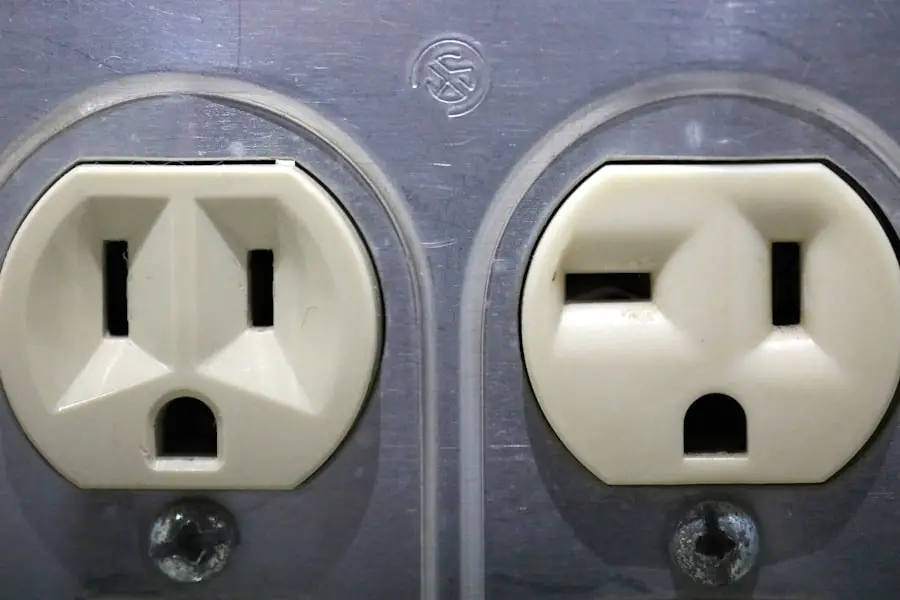The terms “motel” and “hotel” are often used interchangeably in casual conversation, but they refer to distinct types of lodging establishments that cater to different needs and preferences. A hotel is typically a larger establishment that offers a wide range of services and amenities, including room service, on-site restaurants, fitness centers, and conference facilities. Hotels are designed to accommodate guests for longer stays and often provide a more luxurious experience.
They can vary significantly in size, from boutique hotels with a handful of rooms to sprawling resorts with hundreds of accommodations. In contrast, a motel is generally a smaller, more budget-friendly option that primarily caters to travelers seeking a place to rest for the night. Motels are often located along highways or major roads, making them convenient for road trippers and those on the go.
The layout of motels typically features exterior corridors, allowing guests to park directly outside their rooms. While motels may offer basic amenities such as free Wi-Fi and continental breakfast, they usually lack the extensive services found in hotels. This fundamental difference in purpose and design sets the stage for understanding the various aspects that distinguish motels from hotels.
Key Takeaways
- Motels are typically designed for travelers needing a place to rest for the night, while hotels cater to a wider range of travelers including tourists and business professionals.
- Motels often offer basic amenities and services such as parking and easy access to rooms, while hotels provide a wider range of amenities including restaurants, bars, and room service.
- Motels are commonly found along highways and in suburban areas, targeting budget-conscious travelers, while hotels are often located in city centers and cater to a more diverse audience.
- Motels generally offer lower prices and are more budget-friendly compared to hotels, making them a popular choice for travelers looking to save money.
- Motel rooms are typically smaller and have a simpler layout, while hotel rooms are larger and offer more luxurious amenities and furnishings.
Differences in Amenities and Services
When it comes to amenities and services, hotels generally provide a more comprehensive array of options compared to motels. Hotels often feature on-site dining options, ranging from casual cafes to fine dining restaurants, allowing guests to enjoy meals without leaving the premises. Additionally, many hotels offer room service, which provides convenience for guests who prefer to dine in the comfort of their rooms.
Fitness centers, swimming pools, and spa services are also common in hotels, catering to guests looking for relaxation or exercise during their stay. Motels, on the other hand, focus on providing essential services that meet the needs of transient travelers. While some motels may offer complimentary breakfast or coffee in the lobby, they typically do not have full-service restaurants or extensive recreational facilities.
The emphasis is on convenience and affordability rather than luxury. For example, a motel might provide basic amenities such as free parking, Wi-Fi, and a small refrigerator in the room, but it is unlikely to offer the same level of service or variety as a hotel. This distinction in amenities reflects the different target audiences and expectations associated with each type of accommodation.
Location and Target Audience

The location of motels and hotels plays a significant role in their appeal to different types of travelers. Hotels are often situated in urban centers, tourist destinations, or near airports, making them ideal for business travelers and vacationers seeking easy access to attractions and services. For instance, a hotel located in downtown Chicago may attract corporate clients attending conferences or tourists visiting iconic landmarks like Millennium Park or the Art Institute of Chicago.
The strategic placement of hotels allows them to cater to a diverse clientele with varying needs. Motels, conversely, are typically found along highways or major thoroughfares, targeting road travelers and those looking for quick overnight stays. Their locations are often chosen for convenience rather than proximity to attractions.
A family on a cross-country road trip might choose a motel near an interstate exit for its easy access and affordability. The target audience for motels tends to be budget-conscious travelers, including families, truck drivers, and individuals seeking a simple place to rest without the frills associated with hotels. This difference in location and audience highlights the unique roles that motels and hotels play in the hospitality industry.
Price and Budget Considerations
| Factors | Considerations |
|---|---|
| Price | Comparing prices from different vendors |
| Budget | Setting a budget for the project |
| Cost Analysis | Conducting a cost analysis to determine expenses |
Price is one of the most significant factors influencing travelers’ accommodation choices. Hotels generally come with higher price tags due to their extensive amenities and services. Luxury hotels can command premium rates, especially in high-demand areas or during peak travel seasons.
Even mid-range hotels may charge more than motels because they offer additional comforts such as concierge services, upscale furnishings, and enhanced security measures. For example, a hotel room in New York City can easily exceed $300 per night during busy times, reflecting the demand for quality accommodations in a bustling metropolis. Motels are designed to be more budget-friendly options for travelers who prioritize cost over luxury.
Rates at motels can vary widely depending on location and season but are generally much lower than those at hotels. A typical motel room might range from $50 to $150 per night, making it an attractive choice for families on a budget or solo travelers looking for an economical place to stay. Many motels also offer discounts for extended stays or membership programs that provide additional savings.
This focus on affordability makes motels particularly appealing to those who need a place to rest without breaking the bank.
Size and Layout of Rooms
The size and layout of rooms in hotels and motels also differ significantly, reflecting their respective purposes and target markets. Hotel rooms tend to be larger and more varied in design than motel rooms. Many hotels offer different types of accommodations, including standard rooms, suites with separate living areas, and even penthouses with luxurious amenities.
The layout often includes features such as spacious bathrooms, work desks, and seating areas that enhance the guest experience. For instance, a hotel suite may come equipped with a kitchenette or a balcony overlooking scenic views. In contrast, motel rooms are typically smaller and more straightforward in design.
The focus is on providing essential sleeping accommodations rather than luxurious features. A standard motel room usually includes a bed, a small bathroom, and basic furnishings like a dresser or desk. While some motels may offer upgraded rooms with additional amenities such as microwaves or mini-fridges, they generally do not match the size or sophistication of hotel rooms.
This difference in room size and layout reflects the varying expectations of guests at each type of accommodation.
History and Evolution of Motels and Hotels

The history of motels and hotels is intertwined with the evolution of travel itself. Hotels have been around for centuries, with their origins tracing back to ancient civilizations where travelers sought shelter along trade routes. The modern hotel industry began to take shape in the 18th century with the establishment of grand hotels in Europe that catered to wealthy travelers seeking luxury accommodations.
The advent of rail travel in the 19th century further propelled the growth of hotels as they became essential stops for passengers. Motels emerged in the early 20th century as automobile travel gained popularity in the United States. The first motel is often credited to Arthur Heineman, who opened the Milestone Mo-Tel in San Luis Obispo, California, in 1925.
Designed specifically for motorists, motels offered convenient parking directly outside guest rooms and affordable rates for families traveling by car. Over time, motels proliferated along highways across America, becoming synonymous with road trips and budget travel. This evolution reflects changing societal trends and transportation methods that shaped how people sought lodging throughout history.
Branding and Chain Affiliations
Branding plays a crucial role in distinguishing between motels and hotels within the hospitality industry. Many hotels are part of larger chains that offer consistent branding and quality across multiple locations. Well-known hotel brands such as Marriott, Hilton, Hyatt, and InterContinental provide guests with recognizable experiences regardless of where they stay.
These chains often have loyalty programs that reward frequent travelers with points redeemable for free nights or upgrades. Motels also have their share of branding but tend to be less standardized than hotels. While some motel chains like Super 8 or Days Inn offer recognizable names across various locations, many independent motels operate without affiliation to larger brands.
This independence can lead to significant variations in quality and service from one motel to another. Travelers may find that while some independent motels provide excellent service and cleanliness, others may not meet the same standards due to lack of oversight or brand guidelines.
Choosing the Right Accommodation for Your Needs
When it comes to selecting between a motel and a hotel for your next trip, several factors should be considered based on your individual needs and preferences. If you are traveling for business or planning an extended vacation where comfort and amenities are paramount, a hotel may be the better choice. The additional services offered by hotels can enhance your overall experience—whether it’s enjoying a gourmet meal after a long day of meetings or unwinding at a spa.
On the other hand, if you are embarking on a road trip or simply need a place to rest overnight without spending excessively, a motel could be more suitable. The convenience of parking right outside your room combined with lower rates makes motels an attractive option for budget-conscious travelers or those seeking quick stops along their journey. Ultimately, understanding your priorities—be it luxury versus affordability or location versus amenities—will guide you toward making an informed decision about your accommodation choice.
If you are planning a trip and trying to decide between staying at a motel or a hotel, it’s important to understand the key differences between the two. Motels are typically smaller, more budget-friendly accommodations that offer direct access to your vehicle from your room. On the other hand, hotels are larger establishments that often provide more amenities and services, such as room service and concierge assistance. For more travel tips and recommendations, check out this article on the best ultralight tent for backpacking here.
FAQs
What is the difference between a motel and a hotel?
The main difference between a motel and a hotel is their design and layout. Motels typically have rooms that open directly to the outside, while hotels have rooms that are accessed through an interior hallway.
What are the amenities typically found in a motel?
Motels usually offer basic amenities such as parking directly outside the room, limited food and beverage options, and a smaller number of rooms compared to hotels.
What are the amenities typically found in a hotel?
Hotels typically offer a wider range of amenities including restaurants, bars, room service, fitness centers, swimming pools, and conference facilities. They also tend to have more rooms and a larger staff to cater to the needs of guests.
Are motels or hotels more suitable for longer stays?
Hotels are generally more suitable for longer stays due to their wider range of amenities and services. However, some motels also cater to long-term guests with extended stay options.
Which is typically more affordable, a motel or a hotel?
In general, motels are often more affordable than hotels due to their simpler design and fewer amenities. However, this can vary depending on the location and specific features of the establishment.
